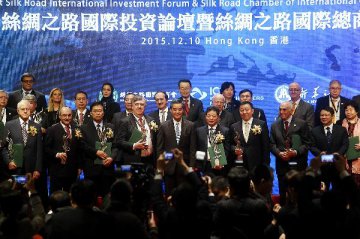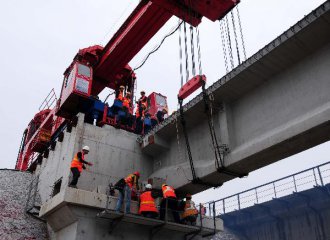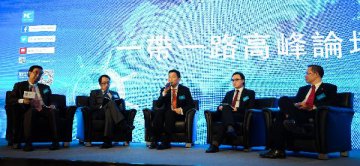
Loaded with 200 tonnes of cargo, a freight train leaving south China's Guangzhou today will arrive in Moscow 18 days later, having traveled more than 7,000 miles through Eurasia.
The trip is two weeks faster than the journey by sea via Hong Kong, winding along the eastern Chinese coast and around the Korean peninsula to Vladivostok and then by rail again to the Russian capital.
Another railway route, starting from nearby Dongguan, exits China from northwestern Xinjiang to Kazakhstan, connecting the world's manufacturing center with landlocked central Asia and on to Europe.
A consortium of Chinese and Russian companies have agreed on a contract worth around 380 million U.S. dollars with Russian Railways on pre-construction surveys and design for a 770 km high-speed track linking Moscow and Kazan.
These lines, part of an ambitious initiative for regional integration, are bringing countries along routes new opportunities and hope, and will no doubt be the subject of much conversation at the upcoming Shanghai Cooperation Organization (SCO) prime ministers' meeting from Dec. 14 to 15.
China's neighbors have high hopes that the Belt and Road will help their slowing economies. If successful, the Belt and Road will become a trade, investment and infrastructure network that connects Asia with Europe and Africa.
Founded in 2001, the SCO consists of China, Russia, Kazakhstan, Kyrgyzstan, Tajikistan and Uzbekistan. It has potential new members in India and Pakistan. Iran and Mongolia are observers.
These countries were major participants of the ancient silk trade, and almost all are developing nations. Former Singaporean foreign affairs minister George Yeo Yong-Boon said Eurasia will become a major driver for global economic growth in coming decades and the connectivity the Belt and Road will bring could catalyze development. Cooperation has not been limited to transportation.
Kyrgyzstan relies on oil imports due to a lack of refining technology. It had an annual production capacity of 100,000 tonnes compared with demand for 2.5 million tonnes. Since December 2014, with Chinese investment, a new refinery has provided one third of the oil the country needs and the taxes it renders are expected to yield one seventh of the national tax revenue.
The project employs about 2,000 people, and there are plans to train another 1,000 local professionals over the next 10 years, according to Wang Jiulong of Trans-Asia Gas Pipeline, a major investor. China also has agreements with Uzbekistan, Tajikistan and Kyrgyzstan on gas pipelines.
In 2014, trade volume between China and the four central Asian SCO members hit 40 billion U.S. dollars, a 13 percent increase year on year.
In the end of 1970s, China was eager to attract foreign investment, and to learn about foreign technology and management science. During decades of rapid development, an array of strong companies and industries accumulated considerable funds and experience.
"Chinese technology and management is perhaps more suitable for SOC members which have similar, weak infrastructure [as China in the 1980s]," said Tu Xinquan of the University of International Business and Economics.
A Silk Road fund and the Asian Infrastructure Investment Bank, with authorized capital of 100 billion U.S. dollars, have been created to finance infrastructure across Asia. At the 15th SCO summit in July, President Xi said China would meet investment demands of SCO members via the China-Eurasia economic cooperation fund and the Silk Road fund.
To address the shortage of capital, SCO members are moving forward on an SCO development bank, a proposal which Xi described as of "great significance" that will advance multilateral cooperation.
China has currency swap agreements with Russia, Uzbekistan and Kyrgyzstan to advance local currency settlement in bilateral trade.
After the inclusion of the RMB into the Special Drawing Rights basket, the SCO countries will be more willing to settle with yuan and use Chinese investment. China stresses an open and inclusive Belt and Road initiative.
The initiative involves more than 60 countries including the SCO members and will help reinvigorate the slowing process of globalization, said Huang Mengfu, honorary president of the All-China Federation of Industry and Commerce.





















Latest comments